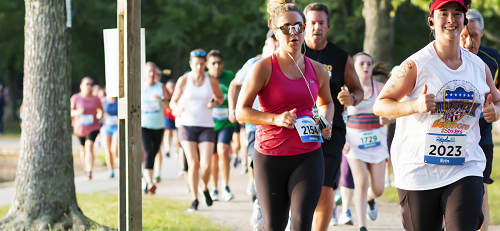

We already know sports facilities can bring in tourism dollars, and even to spur investment in communities, through the construction of hotels and restaurants. The increase in people coming in can lower crime, and can even spur officials to invest in better roads.
But what about the ways facilities increase home values – and even cause new homes to be built, once an area has been seen as desirable? It’s happening around the country.
In Delaware, trails have been built (and later improved upon) to provide a network linking Cape Henlopen State Park, Lewes and Rehoboth. The Junction & Breakwater Trail and the Gordons Pond Trail have opened up a whole new world to people who love to bike and walk, notes the Cape Gazette.
Historically, there has been resistance to the addition of venues, particularly in neighborhoods, with those opposing such changes being dismissively labeled as NIMBYs (short for Not In My Back Yard). But, notes the Gazette, at least in Delaware’s Cape area, all that is changing.
“Once considered a nuisance by some, the trails have become a selling point for new homes and an economic driver attracting thousands of tourists. Many residents who live along a trail have embraced it, and a new trail art and bling culture has developed.”
The National Association of Realtors, in fact, have noted, “The good news is that recent studies have confirmed living near trails and greenways will likely raise your property value an average of 3 to 5 percent and sometimes even as high as 15 percent. There is also not correlation that trails increase crime in their surrounding areas.”
In Florida, an upcoming golf and country club could help satisfy the demand for golf; that demand exploded during the pandemic and the sport experienced a resurgence. Many people were more than ready to buy into the country club lifestyle but a dearth of housing in well-situated markets was causing a problem.
The Palm Beach Post, which carried the story, noted that Panther National, the new residential and golf community at Avenir in Palm Beach Gardens, would be the first country club/golf course community to break ground in almost two decades – and it is evident the demand was there. Within days of opening up reservations for the 218 planned homes (price tag range from $3 million to nearly $10 million), 55 deposits (at $10,000 each) had been received.
Even academic studies have referenced the benefits of sports facilities on the property in surrounding communities.
The journal, Multiple Cities, noted, “the presence of a stadium has a positive impact on real estate and property values, with a positive correlation to proximity.”
In addition, the study noted, “A comprehensive study by George Carlino and Edward Coulson looked at the housing market in every American city that had an NFL franchise between 1993 and 1999. The NFL was then widely recognized as the leading sporting league and the six-year span saw the greatest frequency of franchise relocations in NFL history. During that time, not only did rents increase by 8% across all central cities, but residents were also willing to accept 4% less in annual wages to support the development of sporting facilities for these franchises.”
Neighborhood.com studied several cities that had put in new stadiums. In Los Angeles, for example, the Banc of California Stadium opened in 2018. Home prices increased significantly; a few months after the new stadium was announced, the median home price in Exposition Park was $361,000. That number then rose to $463,000and after the stadium opened, the price was $600,865. The 66.4 percent increase in the Exposition Park area around the stadium compared to only a 6 percent annual increase in the L.A. area overall. (Another California property, the still-new SoFi Stadium, had a similar effect. In October of 2015, the median home price was $373,000. By September of this year, that number had jumped to $535,000).
Professional stadiums differ from youth venues, however, and can be subject to more debate from local communities. The Pensacola News Journal discussed, for example, discussed a plan to add three soccer fields through a land swap with the YMCA of Northwest Florida. The article quoted NRPA as noting, “"It is proven that private property values increase the value of privately owned land the closer such land is to parks. This increase in private property value due to the proximity to parks increases property tax revenues and improves local economies."
The newspaper noted that residents had expressed concerns over traffic, parking and other problems, and opposed the new fields. But, concluded the newspaper reporter, taking action was better than doing nothing about problems that currently existed.
“Throwing up our hands and saying "soccer will make it worse!" — and doing nothing — is exactly the wrong strategy. At best, it would achieve status quo, which is too fast and unsafe. At worst it would show our children that we were so afraid to do anything that instead we did nothing.”

